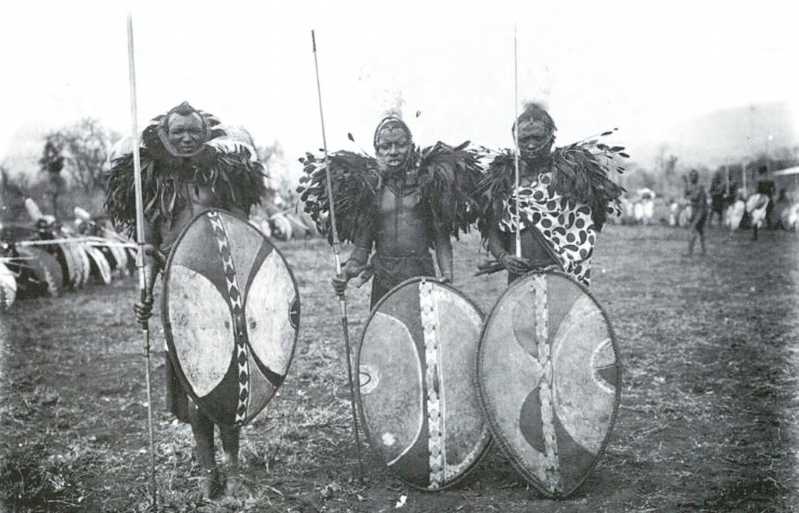In 1884, Norwegian meteorologist Henrik Morn found fragments of the American Arctic expedition ship "Janet" on the southwest coast of Greenland. Strangely, the "Janet" had sunk in June 1881 near the New Siberian Islands, on the other side of the Arctic. This interesting phenomenon attracted Morn’s attention. After investigation and research, he believed that the so-called Arctic was not a continent, but an ocean. The fragments of the "Janet" drifted from the east to Greenland along with the glaciers, through the North Pole, and if the Arctic was a continent, this would not have happened.
The young zoology doctor, Norwegian Fridjof Nansen, believed in Morn’s reasoning. "I think the Arctic is not a continent! It’s an ocean!" Nansen murmured at the Norwegian Geographical Society, his slightly thin face set off his resolute eyes, and the moustache on his upper lip trembled with excitement. After a moment of silence, Nansen spoke slowly and firmly: "So, why did we always fail in our previous Arctic expeditions? Because we always tried to use technology to fight against natural forces and the Arctic glaciers. I think we should observe the power of nature, cooperate with it, or use it. The scientists at the meeting listened quietly. Most of them did not comment, but some nodded slightly in agreement. "If we build a boat, a small, sturdy, but flexible and maneuverable boat, with enough 12 "It took an explorer five years of fuel and supplies to make the ship drift with the Arctic glaciers and continue to move westward, but it can eventually reach the pole!" Suddenly, there was a scornful voice in the venue, and many people shook their heads and sighed: "Oh! He is crazy." Most experienced Arctic explorers disdained Nansen’s plan. Despite this, the stubborn Nansen began to prepare for his Arctic expedition. Some people who supported Nansen also raised funds for him. Nansen’s passionate and logical speech also moved the Norwegian Parliament and won the latter’s support.
Absurd self-destructive plan
Fridjof Nansen was born in a wealthy family near Oslo, Norway. When he was young, he studied zoology and served as the director of the Bergen Museum in Norway. In 1888-1889, he completed the feat of crossing the world’s largest island, Greenland, and became the first explorer in human history to successfully cross the Greenland Ice Sheet. After the success of the Greenland expedition, he With rich experience in surviving near the poles and the respect of everyone from the king to the common people, Nansen took this opportunity to propose his "crazy" proposal to the London Geographical Society in February 1890. The retired American explorer Adolphus Gregory believed that Nansen’s plan was an "absurd self-destructive plan".
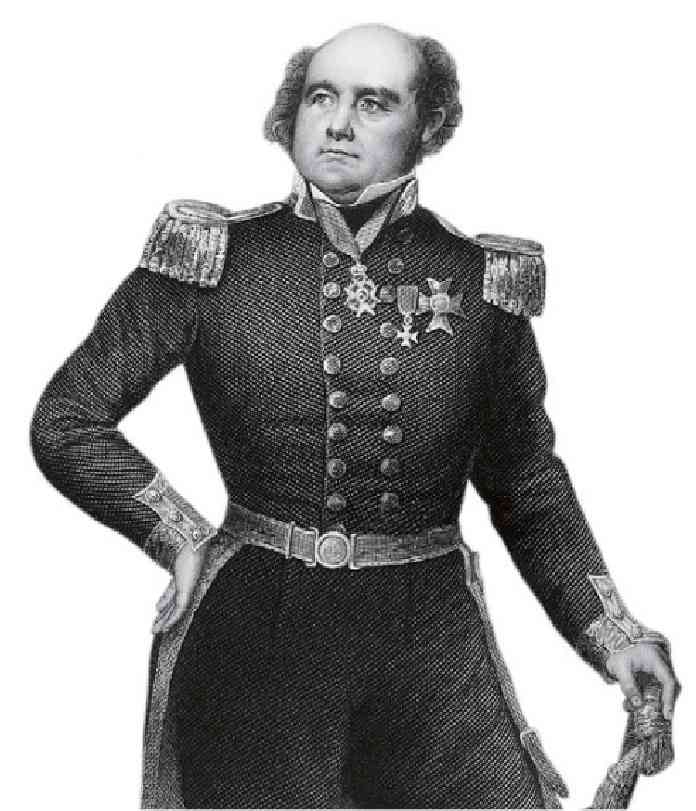
On August 30, 1492, Columbus set sail and created his great achievement with far-reaching historical significance. Columbus’ success immediately aroused a new desire to go north to find a new and shorter way to the East. Whoever finds this way first will have the huge wealth of the East. Finding a "Northeast Passage" or "Northwest Passage" that crosses the Arctic waters and reaches Asia directly has become the goal of explorers from Western countries.
The first to embark on the journey were the Portuguese brothers Miguel and Gaspard. In 1500, they landed on Newfoundland and saw Greenland. The next year, they continued to sail north, but never returned, becoming the first victims of the Northwest Passage. Since then, countless explorers have tried to open up this route, and many people, such as Barents and Bering, have died in this icy sea. From 1846 to 1848, the British John Franklin led the "Darkness" and "Terror" deep into the island area of the North Sea of Canada to explore the "Northwest Passage". All 129 crew members were killed. It was not until May 1859 that people found the navigation records stored in a golden cylinder on the "Darkness" in the west of William Island. They learned that the fleet was surrounded by huge floating ice when passing through the Victoria Strait. In the end, the crew abandoned the ship and went ashore. All of them died on the way due to hunger and cold and the hardships of the journey. This expedition became the biggest tragedy in the history of Arctic exploration.
Although Franklin failed to open the Northwest Passage, his tragedy attracted great attention from the world’s public opinion. Batch after batch of explorers also set off a wave of sprinting to the North Pole of the Earth. Although they obtained a lot of field survey data on the Arctic, they could not determine the most basic question of whether the Arctic is a continent or an ocean. Canadian explorer Parry explored the Arctic by sled, so in his eyes, the Arctic was a piece of land; while American Hall marched to the Arctic by ship, and of course he believed that the Arctic was not land, but an ocean. And the one who finally solved this mystery was Fridtjof Nansen.
Even if I am frozen in the Arctic, I will fight
Nansen once wrote in his diary: "The first thing in life is to find a goal and then do everything to achieve it." Now, Nansen’s goal is to use the power of nature to drift with the glaciers and reach the North Pole. In order to achieve this goal, Nansen needs a ship that is different from previous Arctic exploration ships. This ship should be very strong and can float and move with the glaciers instead of being destroyed by ice. For Nansen’s expedition team, the speed and sailing ability of the ship are not the most important. The sturdy hull and continuous warmth retention are the most needed in the long Arctic expedition. Norwegian shipbuilder Colin Archer built such a ship for Nansen’s "whimsical plan".
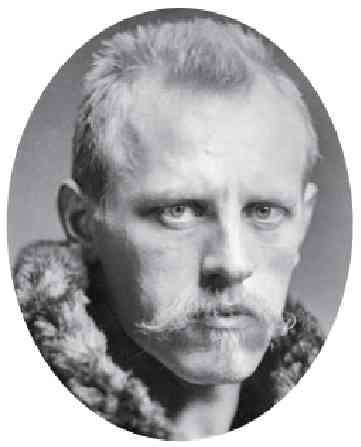
Archer used the strongest oak to make the pillars and beams of the ship, and used a complex structure to make the hull extremely stable. He made the shape of the ship very wide and very shallow, so that when the hull encounters floating ice, it will be squeezed and drift on the ice, and then drift with the ice, so as not to be smashed by the ice. Not only that, the lines of the bow and stern keel are very smooth. This ship can shuttle through the glacier like an eel. The rudder is designed as a retractable structure, and the whole ship is also insulated! It is enough for the crew to live on it for 5 years. Finally, in 1892, Archer completed the construction of Nansen’s expedition ship, a three-masted sailing ship with a length of 39 meters and a width of 11 meters, equipped with a steam engine. Nansen’s wife named the ship "Frem", which means "forward"
Many people who are keen on exploration support Nansen’s plan. They not only actively raise funds for Nansen, but also sign up to join Nansen’s team. Among several thousand volunteers, Nansen carefully selected 12 explorers who he thought were firm in their beliefs and had rich sailing experience. Since Nansen’s plan was not recognized by the Norwegian Geographical Society, there were few professional scientists among the 12 explorers, and most of them were naval soldiers and old sailors. It is worth mentioning that there was a reserve lieutenant, Hjalmar Johnson, who was well-proportioned, very good at skiing and gymnastics, and was an athlete. He wrote to Nansen at the time to request to join the expedition, but for some reason Nansen did not reply to him. Johnson was not discouraged. When the "Frem" came to Christiania (the old name of Oslo, the capital of Norway) for assembly, he rushed to Nansen’s home and asked him to join the expedition in person. Nansen was moved by Johnson’s persistence, but at that time there was no other position on the "Frem", so Johnson could only board the ship as a stoker.
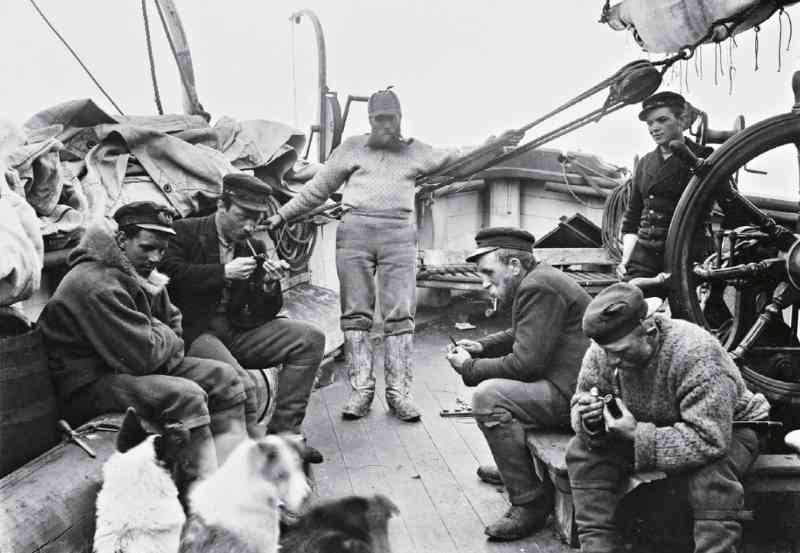
On June 24, 1893, the "Frem", which was fully prepared, finally set off from Christiania. Thousands of Nansen’s supporters cheered on the dock and fired salutes, wishing Nansen’s Arctic expedition team a success. Faced with the unknown expedition journey, the crew took various ways to say goodbye, and some even went to fill their cavities. According to the custom of old sailors, most crew members chose to go to the pub and get drunk. Johnson wrote in his diary: "At this moment, we need alcohol to numb and give courage." At this time, Nansen also wrote in his diary: "The Arctic, a mysterious place, even if I am frozen there, I would rather choose to fight and fulfill my wish. ”
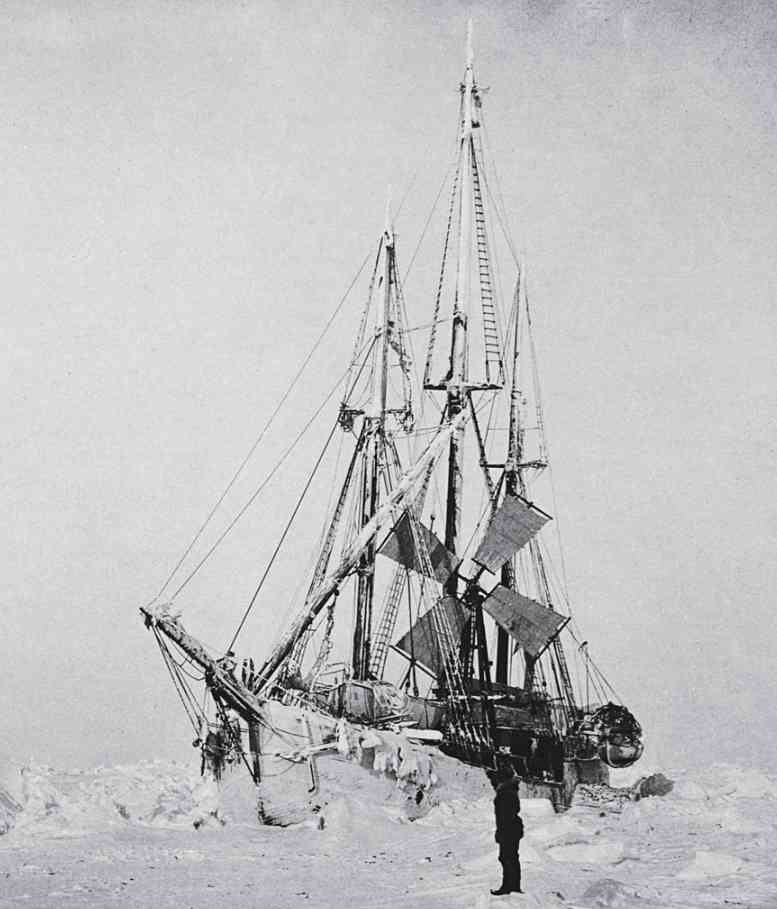
"Give me a chance to take an adventure! Even if it’s only for one day!
In the early morning of July 21, 1893, the "Frem" left the last port of call in the civilized world-Wald, and headed for the uninhabited ice! The polar region, along the northeast route opened up by predecessors, arrived at the northern coast of Siberia. On the route, the sea was filled with fog and large pieces of floating ice were floating everywhere, which was not a threat to the sturdy "Frem".
One day in 1893, between the huge glaciers in the Arctic Ocean, the "Frem" slowly moved forward, and ripples appeared on the mirror-like smooth sea surface. When passing through a mysterious sea area, there were no wind and waves, no glaciers, and no engine failures, but the ship magically slowed down, and the sailing speed was 1/4 slower than normal. Sometimes the ship would turn automatically, and even draw a huge circle on the sea surface to return to the starting point. Many experienced crew members had never encountered this phenomenon, and thought that the "Frem’s voyage disturbed the sea monster in the deep sea, and they were deeply trapped in the sea monster’s tricks. Nansen was also very curious about this, but after a while, the ship still moved forward slowly and finally returned to normal speed.
What the "Frem" experienced was actually the dead water effect - a layer of fresh water from glaciers floated above the heavier seawater, and the interface waves between the freshwater and seawater of different salinities caused friction on the hull, causing the ship to slow down. When the friction is too great, it can even change the course of the ship. With the level of technology in the 19th century, scientists had not yet discovered the dead water effect, and of course Nansen and his expedition team knew nothing about it.

Now, the engine of the "Frem" is still rumbling, using the old method of previous Arctic explorers, and not using the natural force that Nansen mentioned. On September 10, the "Frem" reached Cape Chelyuskin, the northernmost tip of the Eurasian continent. Ten days later, when it approached the location where the "Janet" was crushed, at the north latitude At 78°, he discovered thick floating ice, and then Nansen continued to move north. When he reached 78°49’N, 132°53’E, Nansen ordered the "Frem" engine to stop, and the "Frem" began its drifting adventure using the power of nature.
However, its drifting adventure was not as optimistic as Nansen had planned. The route of the "Frem" was very disappointing. Following the glacier, the ship drifted with the waves in the turbulence, sometimes drifting south, sometimes drifting north, and actually did not move forward. The floating ice constantly hit the hull, and the creaking squeezing and friction sounds rang day and night. At first, the crew was very worried that the hull would be crushed. Fortunately, the "Frem" fully proved its solidity and pressure resistance. On October 5, the "Frem" finally followed the glacier to rise to a safe height, no longer bumping, but moving slowly in the glacier. However, in November On the 19th, Nansen found that the forces of nature did not seem to support their Arctic expedition. The latitude of the ship was further south than when they first entered the ice, and they were actually retreating. On Christmas Day, December 25, they finally crossed the latitude of 79° north.
In the sturdy ship, time seemed to stand still. At first, the crew members were still interested in conducting ocean science measurements and collecting glacier samples with Nansen, but after a while, these scientific research measurements could not arouse the crew’s interest. Everyone had nothing to do and no other entertainment and leisure activities. They were drunk all day long, and the wine stored on the ship began to be in short supply. 6 After a month, the stock of wine was drunk up, and the crew planned to brew their own wine, but failed. Although they had no worries about food and drink, life was too long and boring, which even made some crew members start to make trouble. Faced with this situation, Nansen started a journal at first, calling on everyone to contribute, read, and comment, but it could not be continued after 8 issues because no one contributed. Helpless Nansen complained in his diary: "Can’t something happen? Can’t there be a hurricane to tear the ice apart? Are even our souls frozen?"
Nansen’s soul was not frozen. His belief in exploring the Arctic was like a flame, growing stronger and stronger in this vast ice. He wrote in his diary: "Give me a chance to take risks, even if it’s only for a day or a moment!

"We must abandon all tenderness and become a heartless egoist
It was not until the second year, that is, on March 22, 1894, that the "Frem" slowly crossed the 80° north latitude along the glacier, sometimes moving forward and sometimes moving backward. Nansen came to a discouraging conclusion through calculations. At this speed, it might take six or seven years to reach the North Pole. On May 28, the "Frem" reached 81° 34’ north latitude. Nansen began to realize that this kind of drifting with the "ice" might never reach the North Pole. Facts seemed to prove that Nansen’s plan to use the power of nature would not work, but Nansen did not back down. Instead, he announced a bold plan in public. When the "Frem" advanced to 83° north latitude, he and skier Johnson took dogs and sleds off the ship and skied to the North Pole. It was not until March 14, 1895 that the ship finally drifted to 84° 4’ north latitude. Nansen and Johnson got off the ship and headed north on the glacier with sleds, kayaks, food and 28 sleds.
In order to ensure the speed of travel and reach the North Pole as soon as possible, they moved forward day and night, and only had to rest for a while when they were extremely tired. The glacier was full of steep ice peaks. Many sled dogs were overwhelmed by the supplies on the sleds, but although they were extremely tired and staggering, they did not stop moving forward. Nansen and Johnson often had to pull the sleds with the sled dogs and cross slopes one after another. At the beginning, Johnson could still shout loudly to let the sled dogs move forward. Later, his hoarse voice no longer worked, and the two had to drive the sled dogs with sticks. Nansen wrote in his diary: "I dare not look into their eyes at the cruel treatment of these poor animals. We must move forward, we must abandon all tenderness and become a heartless egoist, which makes me feel very sad about myself." On March 29, when they wanted to cross an ice barrier, the first dog team accidentally fell into the gap. The two dragged the sled dogs out one by one. In extreme panic, a sled dog named "Rattlesnake" broke free from the lasso and ran away in fear. But after a while, this loyal partner ran back to Nansen and Johnson, wagging his tail, which moved them deeply. However, in order to reach their goal, the two had to continue to wave sticks coldly and drive the sled dog team forward. The most terrifying thing was that the dog food prepared before was getting less and less. Although it was painful, Nansen and Johnson had to kill some weak dogs to feed the other sled dogs. Johnson killed the first dog named "Guard". He stabbed this loyal friend to death with a bear hunting spear with tears in his eyes. The other sled dogs, although very hungry, many still refused to eat their former partners. Then, the sled team had fewer and fewer partners, and the happiest snow dog "Wag" who always wagged his tail was also cruelly stabbed to death.
By June, only 7 of the 28 sled dogs remained. The supplies were running low, but the glaciers around them didn’t seem to have changed, only the road was getting harder and harder to walk on. On April 7, 1895, after careful consideration, Nansen decided that they had no ability to continue moving north, so they had to abandon the North Pole and head southwest, turning to Cape Frigli in Franz Josef Land. At that time, Nansen, Johnson and their remaining companions were at 86°13.6’ north latitude, 226 miles from the North Pole, the northernmost point in the world that humans had reached. Nansen looked in the direction of the North Pole and said to himself, "I don’t know when I can come again."
In August 1896, Nansen returned to Norway. Although he did not reach the North Pole, he collected a lot of information during the expedition, and for the first time in human history, he used irrefutable facts to prove that the North Pole was not land, but an ocean with floating ice and snow.
“I’ve finally arrived at the North Pole
More than a decade later, the human desire to reach the North Pole was finally realized by another explorer, Robert Peary.
Peary was an American explorer and a U.S. naval officer. He was born in 1856. Between 1898 and 1902, Peary had already begun exploring the Arctic. The American Geographical Society and the Royal Geographical Society of the United Kingdom highly praised Peary’s exploration of Cape Caps at the northern tip of Greenland in 1900 and named the land Peary Land. In 1902, Peary arrived in the north of Ellesmere Island in Canada, making great contributions to human exploration. Peary’s expedition to the Arctic Ocean reached the “farthest north” in the Western Hemisphere. Not only that, Peary also built several warehouses at 80° north latitude to store the necessary supplies for Arctic expeditions, reducing the burden on future Arctic explorers. When Peary tried to cross the Arctic Ocean for the first time, like Nansen, he also failed. In 1905, Peary began his second Arctic expedition, when George Crocker, the youngest son of American banker Charles Crocker, donated $50,000 to him. Peary used this huge sum of money to build a new ship and named it "Roosevelt". Peary’s expedition team stopped its journey at 86° north latitude because the broken ice could no longer allow the "Roosevelt" to move forward. And the South Like the forest, the lack of food and supplies, and the dog sled did not allow Peary to go further to the North Pole.
In 1906, Peary arrived at Cape Heraklion. He learned from the lesson that he had to give up the Arctic expedition due to insufficient supplies. He wanted to establish routes and supply stations on the glaciers to reduce the weight of the expedition members and save physical strength so that he could finally rush to the North Pole. However, the Inuit did not succeed in establishing a supply station in the Arctic, and this expedition that had not yet set off was aborted.
In July 1908, Peary started his third expedition. He set off from New York on the "Roosevelt" and arrived at Columbia, the northernmost tip of Ellesmere Island. Cape Lumbia, although it is also at 83° north latitude, due to the influence of ocean currents, the ocean conditions here are better than those in the north of Greenland and more suitable for navigation. On March 1, the expedition team disembarked and began to move on the glacier, heading for the North Pole. Peary’s plan was very clear. Because he failed to successfully establish a route and supply station on the route, he divided the expedition team into several teams. Each team was equivalent to a mobile supply station, serving the final Arctic sprint team, providing food and supplies. After each team completed the pathfinding and supply tasks, it returned by the original route. However, this expedition failed in the end due to insufficient supplies. In the end, only 40 dogs and 4 Inuit accompanied Peary, and they had to stop at 87° 45’. Although this expedition failed, it reached 87° 45’. Practice has proved that Peary’s Arctic expedition tactics of "squad supply" are very correct, as long as there are more supplies next time. Each team is more persistent, and Peary firmly believes that he will reach the North Pole.
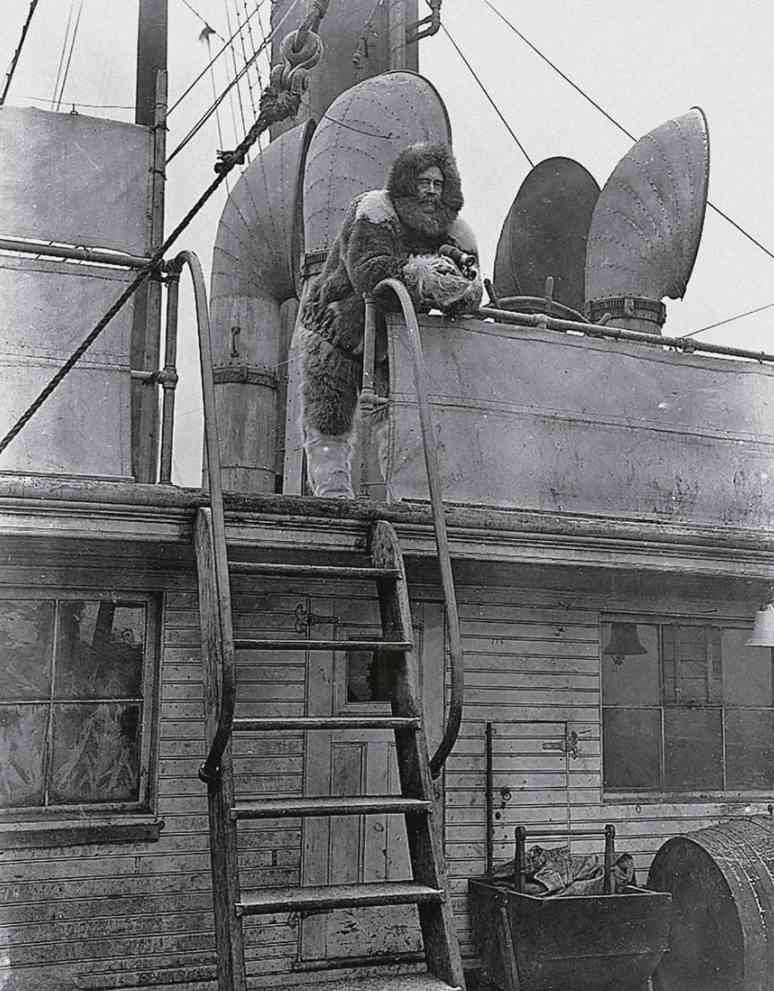
Less than a year later, in February 1909, Peary began his fourth expedition. With the experience of the previous expeditions, Peary made sufficient preparations for this expedition. Peary believed that previous practice had proved that according to the ocean conditions, it was the right choice to sail to Cape Columbia, the northernmost tip of Ellesmere Island. The key to the key is the supply team, which should take on more tasks and save more physical strength for the final sprint team. For this expedition, Peary’s expedition team had a total of 24 people, 133 sled dogs, 19 snows and 6,000 pounds of supplies. Peary, who was familiar with the Inuit lifestyle, specially selected Inuit hunters who were very adaptable to Arctic life as his supply team. Peary made it very clear that only the 6-member polar sprint team would reach the North Pole, but the honor belonged to the entire expedition team.
By the end of March, Peary was only 245 kilometers away from the North Pole. The last supply team had completed the mission, and the last 6-member polar sprint team was very energetic and headed for the North Pole. Among them were Peary and his sled driver Matthew Hansen, as well as the four strongest Inuit hunters and energetic sled dogs. Peary knew that this might be his last time to rush to the North Pole, because he was 53 years old, which made him more motivated. The strong sled dogs also pulled the sled forward at a fast speed. The sufficient food allowed the 6 explorers to feast and replenish their energy during the rest time without worrying about insufficient food reserves. The Inuit hunters who were familiar with the Arctic reminded Peary at any time where the ice cliffs should be avoided. On April 6, Peary and his team finally reached the North Pole. After excitedly using a sextant to determine the position of 90° north latitude, the wrinkles on Peary’s face seemed to relax instantly. He stood on the "top" of the earth and shouted excitedly: "300 years of people’s pursuit, my 20-year dream and goal, the North Pole, I have finally arrived!"
















